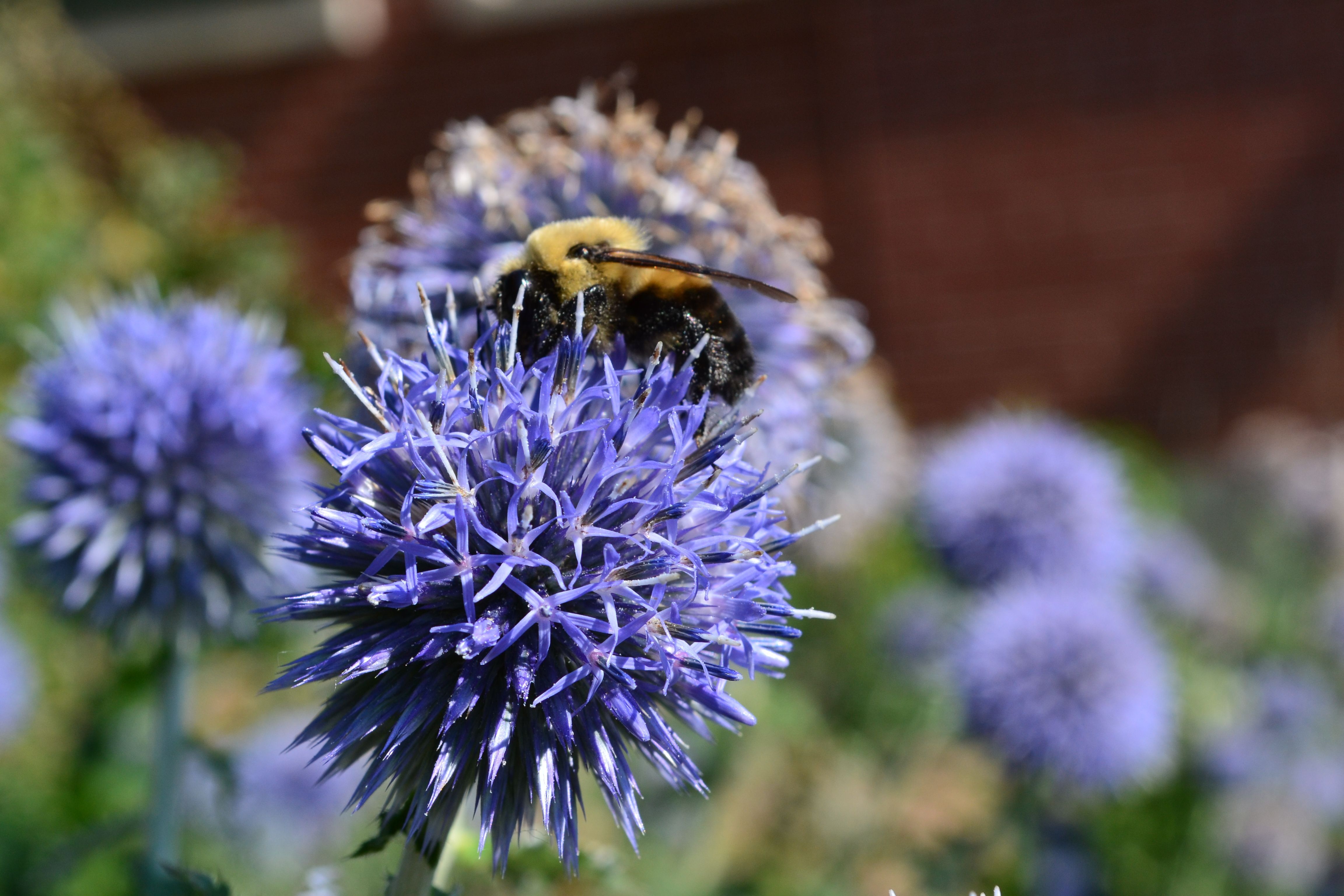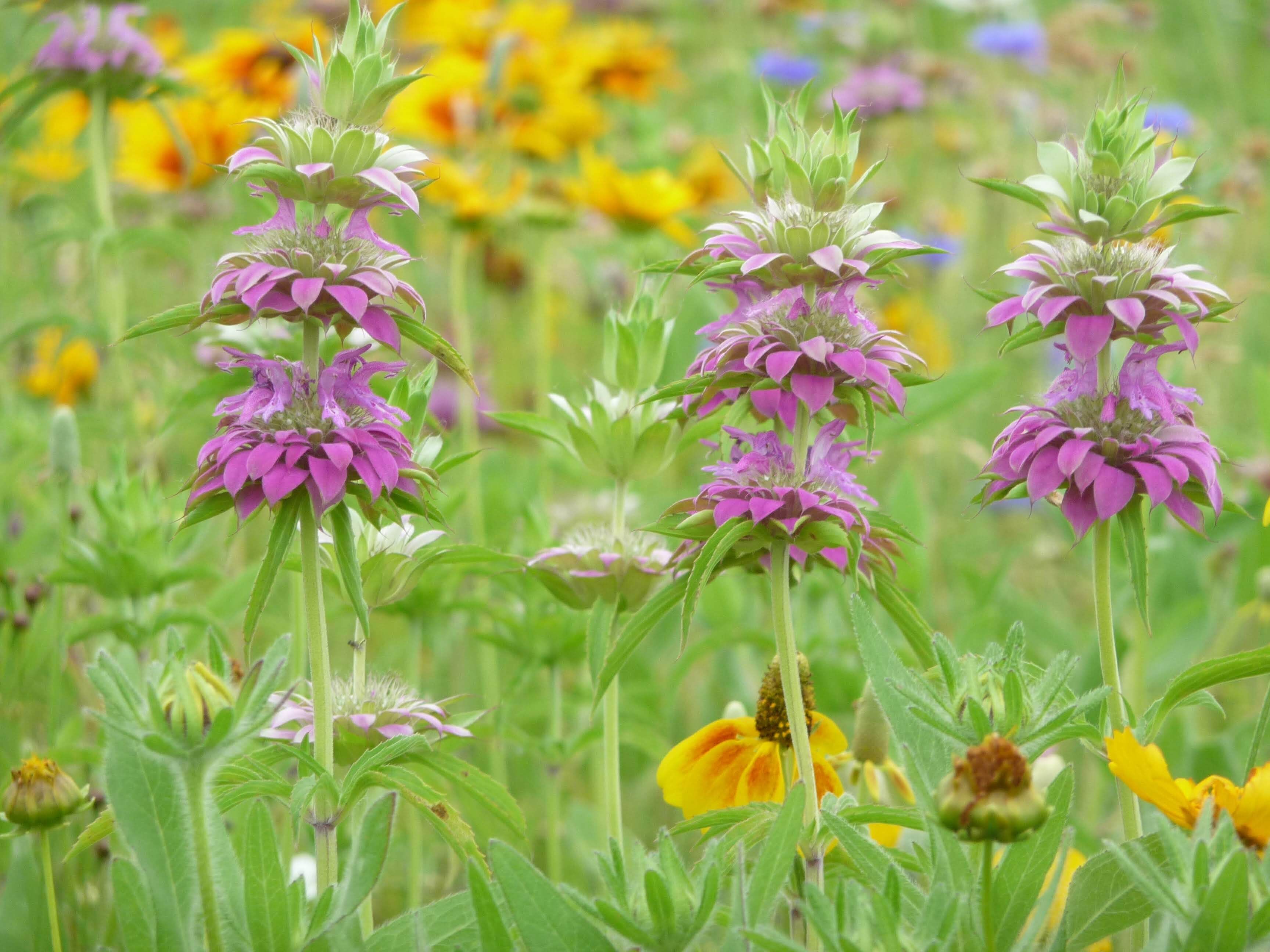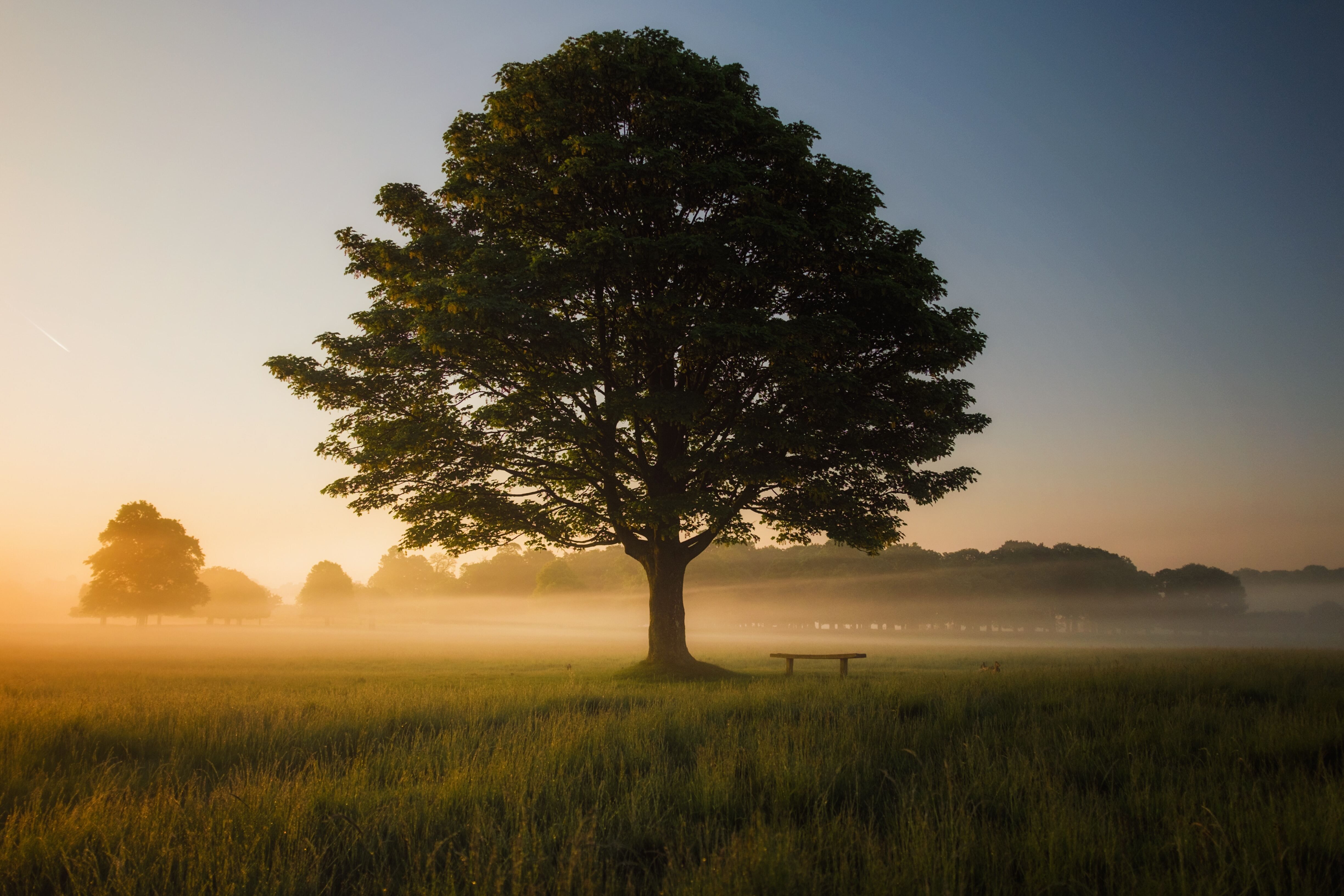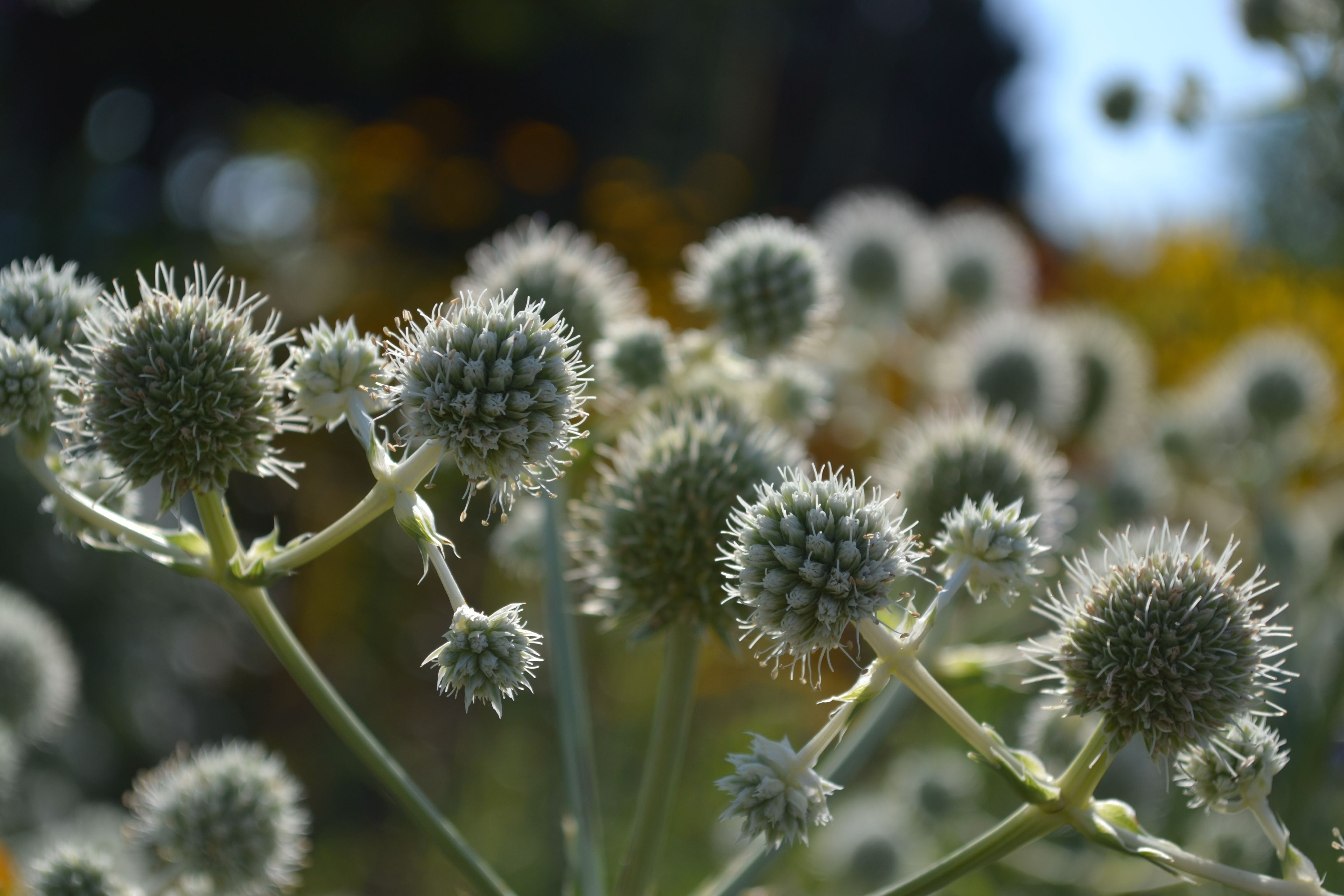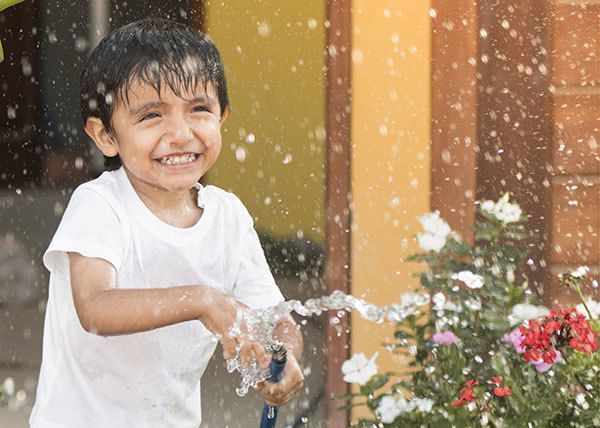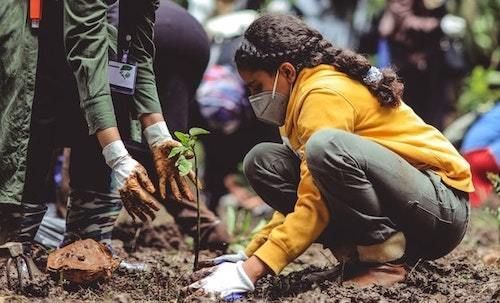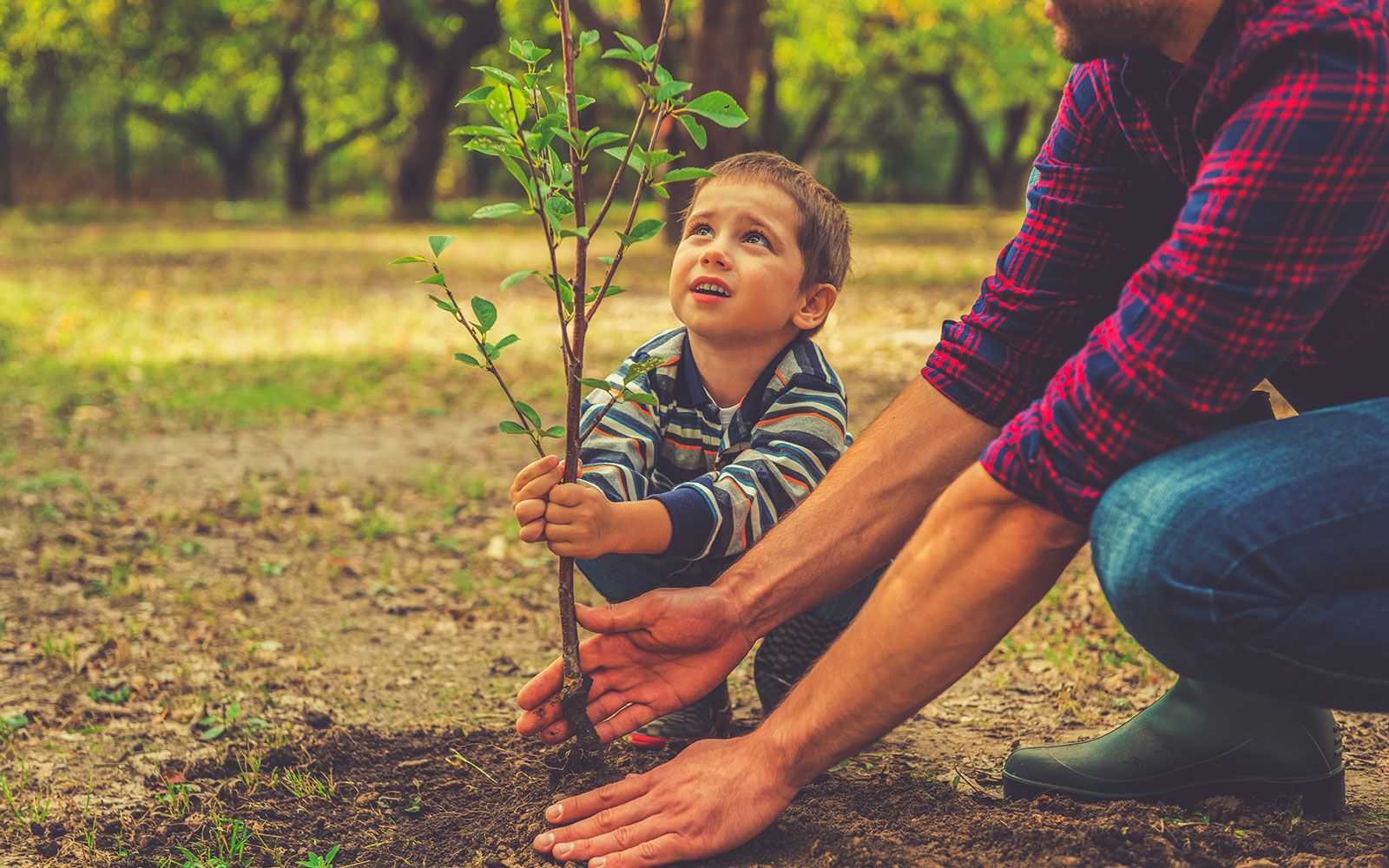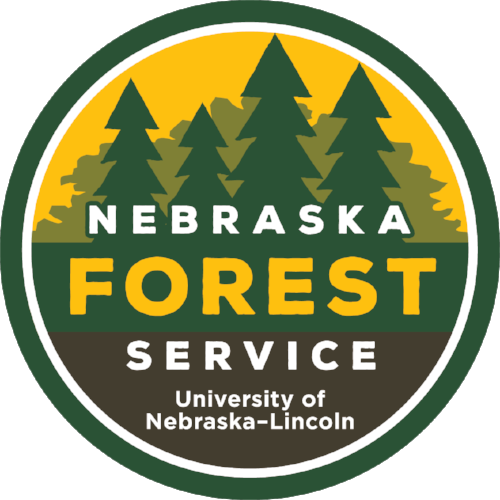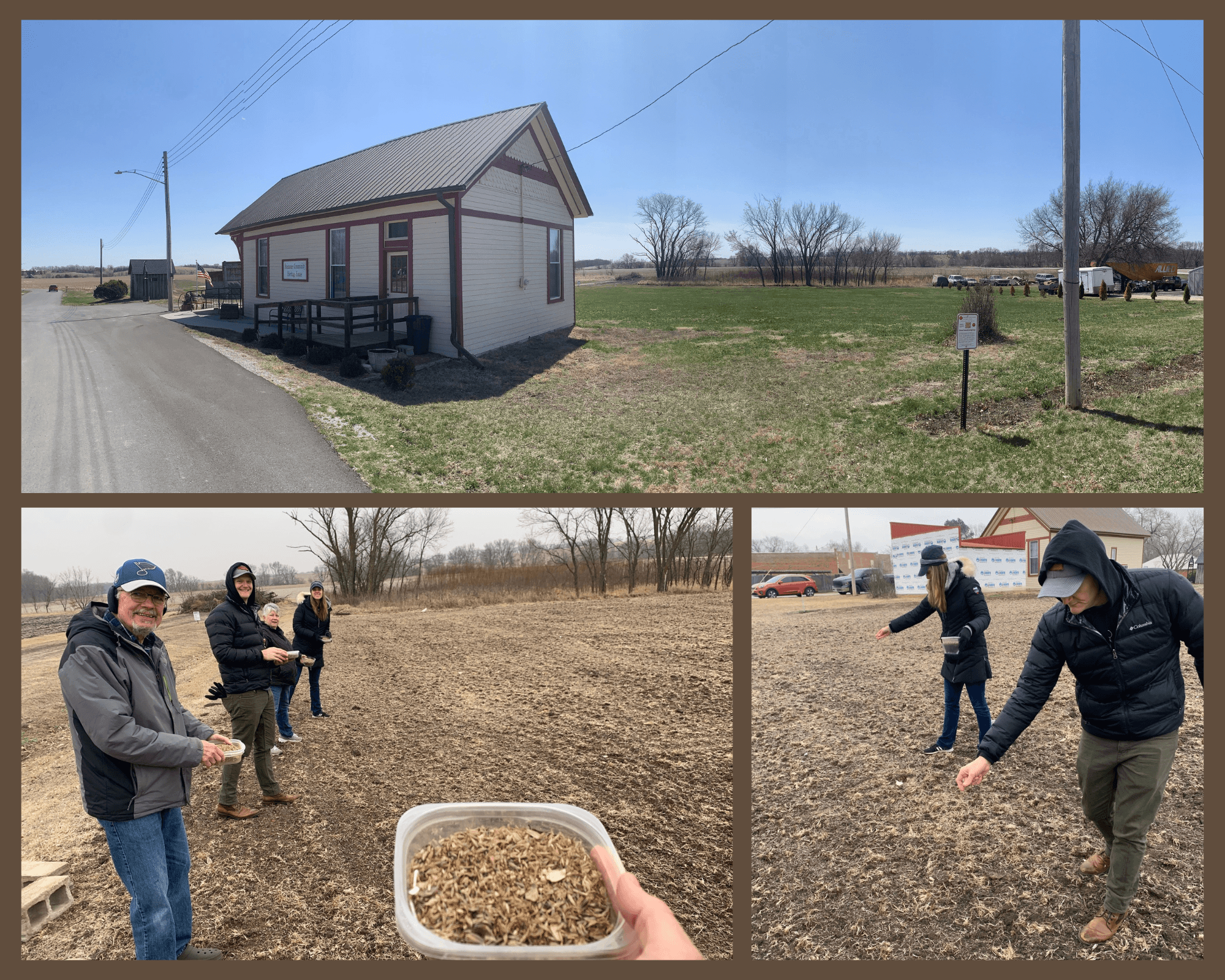
Top photo: The landscape surrounding Steinauer Heritage House was mostly fescue and blue grass before the area was prepared for the prairie planting. Bottom photos: volunteers hand-sowed a mix of 60 different native species in January.
Historically, Nebraska Statewide Arboretum's (NSA) Community Plant Grants have been for gardens that are sized for a dedicated group of volunteers to plant by hand. These gardens are roughly between 500 and 1000 square feet, and at this scale it is realistic to organize and motivate volunteers to plant the 500 or so bedding plants needed to fill the space. However, as an advocate for native plants and native plant gardens, it was only a matter of time before NSA took on a larger project that required us to expand our prairie planting technique and use seed for planting instead of bedding plants.
This 2023-2024 prairie planting project is in the community of Steinauer, Nebraska. Working with Terry Wagner and her dedicated Steinauer Heritage House team of volunteers through a Greener Towns Grant, NSA helped to conceptualize and organize a .75-acre prairie planting behind their historical center. One of their main project goals was to (re)create the visual feeling of what early community settlers would have seen upon entering the area, as this will help to ground their historical house in the physical landscape. In this part of southeastern Nebraska, that would have been beautiful and diverse tallgrass prairie.
An interesting connection to the community of Steinauer and this prairie planting project is that the family of Gerry Steinauer, one of Nebraska Game and Parks Commission’s foremost prairie ecologists, is from the area; hence the shared town and surname (however, depending on who you’re talking with, the pronunciation changes, with Steinauer either being a two- or three-syllable word).
We reached out to Gerry to see if he would like to be involved in the project, and he graciously accepted, assisting to analyze the site and make recommendations on the ground preparation, as well as picking out the 60 different species plants to be grown there in collaboration with the seed supplier, Diversity Farms of Iowa. Gerry’s expertise and planning was greatly appreciated, because making sure the site was properly prepared to receive the seed is critically important to its success.
Interesting species for the planting include:
- Prairie Mimosa, also called Illinois bundleflower (Desmanthus illinoensis)
- Prairie Cinquefoil (Potentilla arguta)
- Grass-leaved Goldenrod (Euthamia graminifolia)
- Yellowfruit Sedge (Carex annectens)
The preparation and seeding process included the following steps:
- Beginning in the fall of 2023, the site was prepared by first killing all existing perennial grasses, mostly fescue and blue grass, through two fall applications of RoundUp herbicide, spaced three weeks apart. It’s also possible to till the area to kill all perennial species if you do not want to use chemicals.
- The site was disced to expose bare soil and reduce the amount of grass thatch that could prevent the seed from contacting the soil.
- The disced area was harrowed to break up any clods and prepare the soil to receive seed.
- We broadcast seed by hand in early January just before snow arrived. The heavy snow, in addition to the freeze thaw of the soil, will assist with soil seed contact and better germination.
- Updates to come on spring and summer germination and year one management.
At a certain scale of prairie planting, it is practical and cheaper to use seed. However, this technique will take more time to establish, with only a few vigorous species taking off the first year. This means that planting with seed requires us to manage the planting for the first few seasons. We look forward to keeping you posted about how the process unfolds and what we are learning; stay tuned for updates later this spring and summer.
Brad Kindler is a Sustainable Landscape Specialist for the Nebraska Statewide Arboretum.


